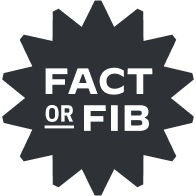What tool was once called "the Puffing Billy"?
Saturday, August 19, 2023
 Make every day more interesting. Each day a surprising fact opens a world of fascinating information for you to explore. Did you know that….?
Make every day more interesting. Each day a surprising fact opens a world of fascinating information for you to explore. Did you know that….? 









| | Original photo by Volgi archive/ Alamy Stock Photo |
| The earliest vacuum cleaners were horse-drawn. | In early 1901, English inventor Hubert Cecil Booth traveled to Empire Music Hall in London to witness a strange invention — a mechanical aspirator designed to blow pressurized air to clean rail cars. Booth later asked the demonstrator why the machine (invented by an American in St. Louis) didn't simply suck up the dust rather than blow it around. "He became heated," Booth later wrote, "remarking that sucking out dust was impossible." Unconvinced, Booth set about creating such a contraption, and later that same year he filed a patent for a vacuum machine he named the "Puffing Billy."
This machine wasn't quite as fancy as modern Dust Busters, Dirt Devils, Hoovers, or Dysons. Instead, the Puffing Billy was red, gasoline-powered, extremely loud, and big — really big. So big, in fact, that the machine needed to be pulled by horses when Booth's British Vacuum Cleaner Company made house calls. Once outside a residence, 82-foot-long hoses snaked from the machine through open windows. Because turn-of-the-century carpet cleaning wasn't cheap, Booth's customers were often members of British high society; one of his first jobs was to clean Westminster Abbey's carpet ahead of Edward VII's coronation in 1902. By 1906, Booth had created a more portable version of the Puffing Billy, and two years later, the Electric Suction Sweeper Company (later renamed Hoover) released the "Model O," the first commercially successful vacuum in the United States. House cleaning has sucked ever since.
|
|
 | | The Hoover vacuum is named after 31st President Herbert Hoover. | | |
|
|
| The Hoover vacuum is named after 31st President Herbert Hoover. |  |  |
|
|
|
|
|
| The world's largest vacuum chamber is located at a NASA facility in the U.S. state of __. |  |
|
|
 | Numbers Don't Lie |
|
 | | Estimated revenue (in USD) of the worldwide vacuum industry in 2023 | | $59.8 billion |
|
|  | | Number of failed prototypes James Dyson built before successfully creating the first bagless vacuum in 1983 | | 5,126 |
|
|
|
 | | Price of the Model O vacuum in 1908 (close to $2,000 today) | | $60 |
|
|  | | Year Electrolux introduced the "Trilobite," the first robotic vacuum | | 1996 |
|
|
|
|
|
 | Engineers in the 19th century used horses to power boats. |
|
| Although an animal-powered boat can trace its origins back to Roman times, team boats (also known as "horse boats" or "horse ferries") became especially popular during the 19th century in the United States. Horses walked either in a circle or in place to turn wheels that moved the boat forward. The first commercially operated horse boat (or any other animal-powered boat) in the U.S. plied the waters of the Delaware River around 1791. Well suited for journeys of only a few miles, horse boats were soon sailing the waters of Lake Champlain as well as the Hudson River before eventually spreading to the Ohio and Mississippi rivers, and the Great Lakes. By the 1850s, these horse-powered creations were largely replaced by paddle steamers — the beginning of the horse's decades-long slide from supremacy to irrelevancy, at least when it comes to transportation. | | |
|
|
|
|
|


posted by June Lesley at 5:38 AM


![]()
![]()
![]()
![]()
0 Comments:
Post a Comment
<< Home